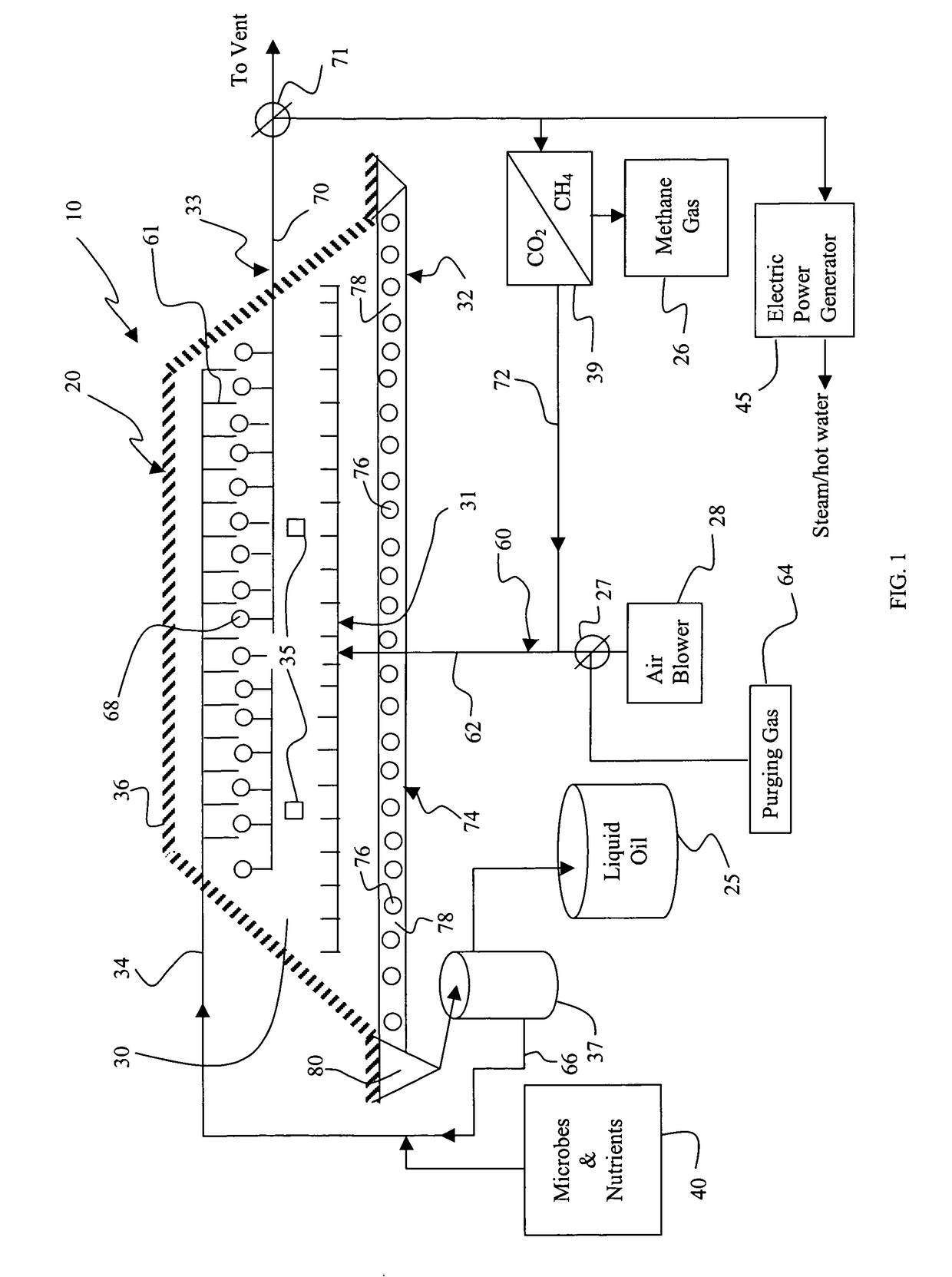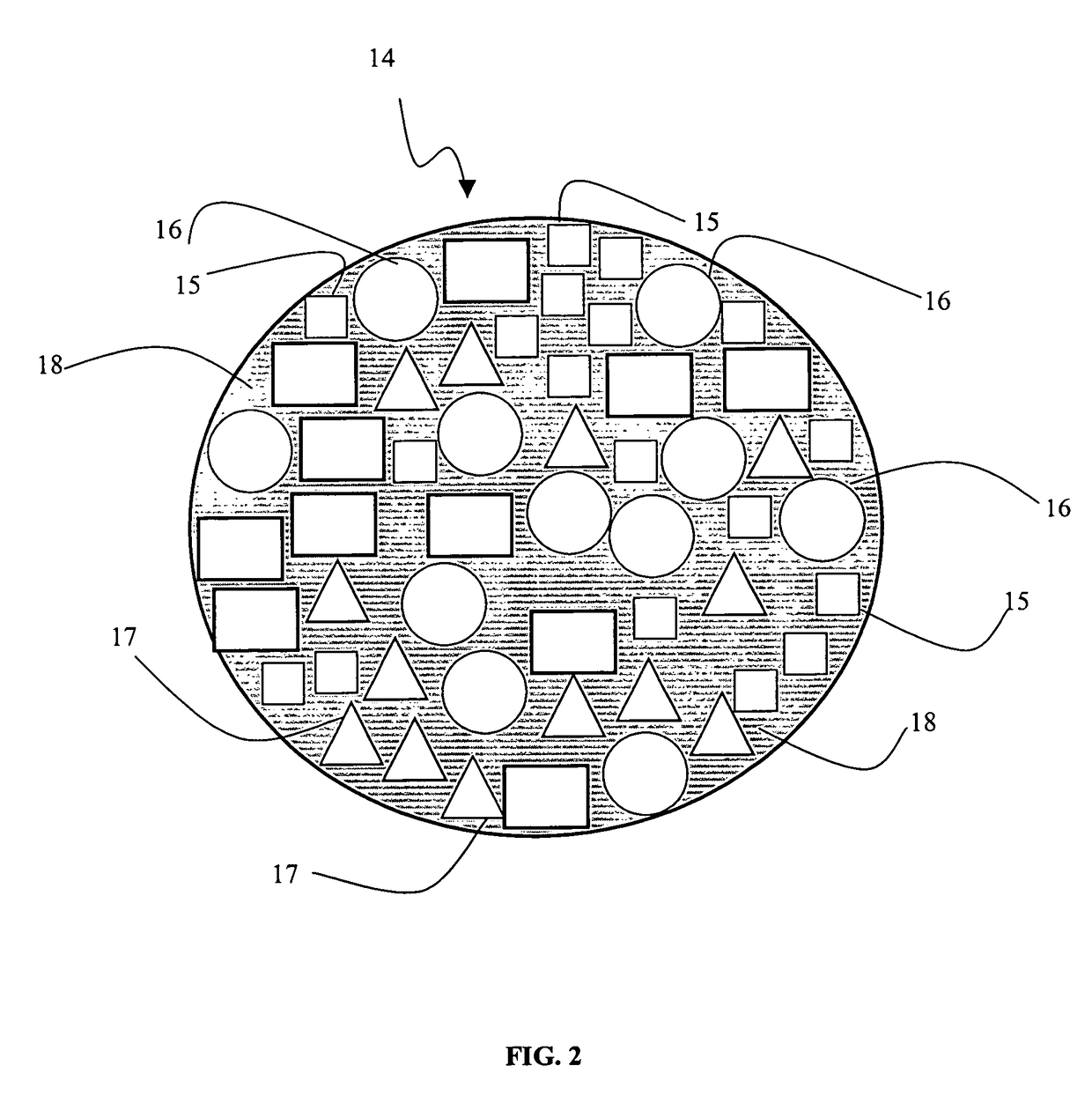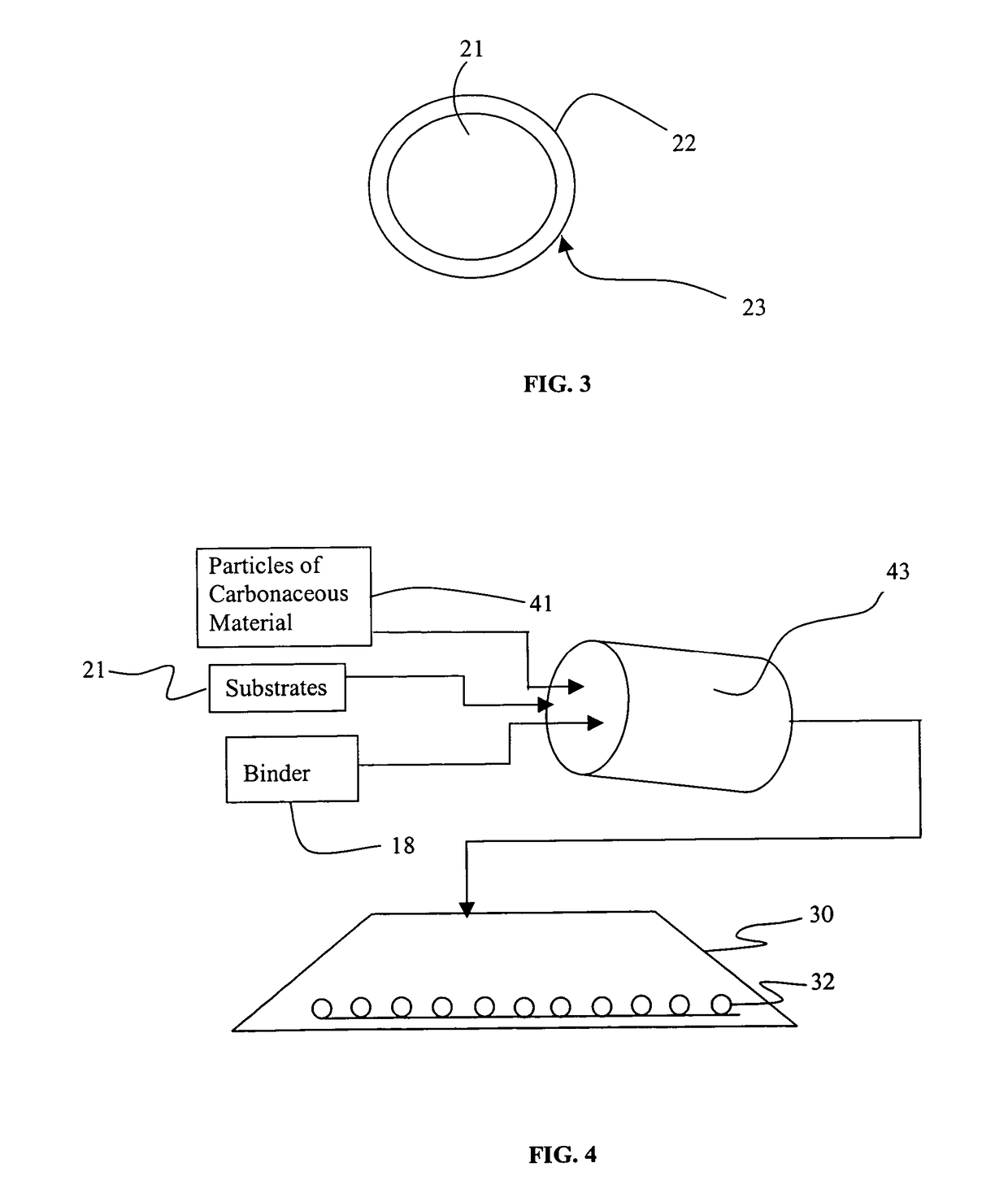Method and bioreactor for producing synfuel from carbonaceous material
a carbonaceous material and bioreactor technology, applied in the field of bioreactors for biodegrading carbonaceous material into synfuel, can solve the problems of high cost of importing lng, high cost of lng import, and risky terminals located in major seaports, and achieve the effect of being ready for biodegradability
- Summary
- Abstract
- Description
- Claims
- Application Information
AI Technical Summary
Benefits of technology
Problems solved by technology
Method used
Image
Examples
example 1
In this example, a solid hydrocarbon containing material such as oil shale is used in a heap bioreactor 20 to produce both oil and methane. The oil shale is mined and crushed to a size of less than 5 cm with an average size fraction of about 3 cm. As illustrated in FIG. 5, the smaller size fraction of less than about 1 cm is agglomerated into larger particles of about 3 cm. A polymeric or Portland cement binder 18 may be used to help form stable agglomerates. It is recognized that another hydrocarbon source such as tar or high viscosity oil may act as a suitable agglomeration aid or may be coated on the surface of the agglomerate. Another way of treating the fines is to remove them from the heap process altogether. Further grinding and flotation may be used to form a higher-grade hydrocarbon that can then be agglomerated or coated back on to the solid crushed and sized material. Alternatively, the fines fraction may be processed in a conventional high temperature process, such as in...
example 2
In this example the hydrocarbon source is oil sand. This material is also called tar sands and contains bitumen similar to oil shale. Alberta Canada has three of the world's largest oil sand deposits, which are conservatively estimated at over one trillion barrels. Bitumen makes up about 10-12% of the oil sands. The remainder is 80-85% sand and clay minerals and 4-6% water. Only about 10% of these deposits are considered recoverable with conventional hot water extraction or flotation enrichment technology. These non-biological extraction processes leave about 25% of the bitumen in an alkaline tail.
In this example, the oil sands material is agglomerated into small pellets or particles of about 1 to 3 cm in size. The size of the particles biotreated should be selected based on the rate at which microbes will reduce the viscosity of the heavy oil and extract it from the particles. This can be determined in laboratory experimentation as was done in Example 1. In general, smaller particl...
example 3
The U.S. and other countries throughout the world have vast amounts of mineable coal. Unfortunately, many of these sources of coal are of low grade or are high in sulfur or ash and are not useful for power generation for environmental reasons. Stricter air quality requirements have reduced the usefulness of many of these coal sources. Most new power generating plants are designed to use cleaner burning natural gas.
In this example, low-grade coal is converted to cleaner burning methane gas by anaerobic bioconversion of coal to methane in a large ex situ heap 30 of crushed and sized coal. The solid nature of coal and its complex chemical structure make it slow to be microbially converted into methane. Thus, in addition to inoculating with fermenting microbes and methanogenic microbes, a good source of nutrients and growth substrate should also be combined with the coal. The substrate, nutrients and microbes can be mixed or agglomerated or coated onto the coal particles as they are bei...
PUM
 Login to View More
Login to View More Abstract
Description
Claims
Application Information
 Login to View More
Login to View More - R&D
- Intellectual Property
- Life Sciences
- Materials
- Tech Scout
- Unparalleled Data Quality
- Higher Quality Content
- 60% Fewer Hallucinations
Browse by: Latest US Patents, China's latest patents, Technical Efficacy Thesaurus, Application Domain, Technology Topic, Popular Technical Reports.
© 2025 PatSnap. All rights reserved.Legal|Privacy policy|Modern Slavery Act Transparency Statement|Sitemap|About US| Contact US: help@patsnap.com



